Innovation in Materials Characterization Award
 The Innovation in Materials Characterization Award honors an outstanding advance in materials characterization that notably increases the knowledge of the structure, composition, in situ behavior under outside stimulus, electronic, mechanical, or chemical behavior, or other characterization feature, of materials. It is not limited to the method of characterization or the class of material observed. Impact of the advance on materials research will be the primary consideration in making the award. Nominations for this award may be made for scientists and engineers in all areas of materials research.
The Innovation in Materials Characterization Award honors an outstanding advance in materials characterization that notably increases the knowledge of the structure, composition, in situ behavior under outside stimulus, electronic, mechanical, or chemical behavior, or other characterization feature, of materials. It is not limited to the method of characterization or the class of material observed. Impact of the advance on materials research will be the primary consideration in making the award. Nominations for this award may be made for scientists and engineers in all areas of materials research.
The Award
The annual award consists of a $5,000 cash prize, a presentation trophy and a certificate. The award is presented annually at the MRS Spring Meeting. Meeting registration fee and transportation and hotel expenses to attend the meeting at which the award is presented will be reimbursed.
Endowers
The Innovation in Materials Characterization Award has been endowed by Dr. Gwo-Ching Wang and Dr. Toh-Ming Lu.
Nomination Information
Nominations for the Innovation in Materials Characterization Award will be accepted June 1 through August 1. Rules and eligibility, nomination package requirements and more are available here.
 "For pioneering developments of pair distribution function methods that have significantly broadened the use of this technique and enabled transformative local structure studies of a wide range of materials"
"For pioneering developments of pair distribution function methods that have significantly broadened the use of this technique and enabled transformative local structure studies of a wide range of materials"
 "For innovations in developing time-resolved methods to characterize the evolution of microstructural features of materials under complex loading and environmental conditions"
"For innovations in developing time-resolved methods to characterize the evolution of microstructural features of materials under complex loading and environmental conditions"
 "For enabling subatomic resolution capability of atomic force microscopy and for the invention of the qPlus sensor, a smart AFM probe with outstanding spatial resolution."
"For enabling subatomic resolution capability of atomic force microscopy and for the invention of the qPlus sensor, a smart AFM probe with outstanding spatial resolution."
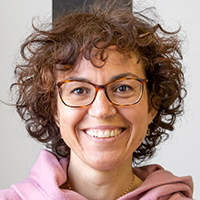 "For the development and innovative use of time-resolved carrier dynamics measurements, from sub-picoseconds to milliseconds, to fundamentally advance our understanding of the photo-physics of metal-halide perovskites, leading to materials and devices of improved stability"
"For the development and innovative use of time-resolved carrier dynamics measurements, from sub-picoseconds to milliseconds, to fundamentally advance our understanding of the photo-physics of metal-halide perovskites, leading to materials and devices of improved stability"
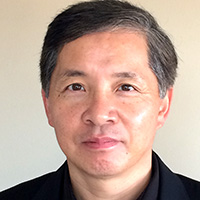 "For pioneering coherent diffractive imaging for a wide range of material systems and atomic electron tomography for determining atomic positions without assuming crystallinity"
"For pioneering coherent diffractive imaging for a wide range of material systems and atomic electron tomography for determining atomic positions without assuming crystallinity"
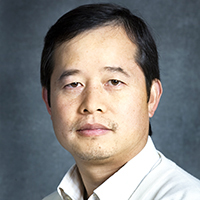 "For pioneering in situ/operando soft x-ray spectroscopy characterization of interfacial phenomena in energy, catalysis and chemical materials science"
"For pioneering in situ/operando soft x-ray spectroscopy characterization of interfacial phenomena in energy, catalysis and chemical materials science"
 “For pioneering atomic-scale transmission electron microscopy under reactive gas environments, leading to groundbreaking insights in catalysis, crystal growth and corrosion.”
“For pioneering atomic-scale transmission electron microscopy under reactive gas environments, leading to groundbreaking insights in catalysis, crystal growth and corrosion.”
 “For developing transformative methods for characterizing the thermal transport properties of materials and their interfaces using time-domain thermoreflectance (TDTR) and related approaches”
“For developing transformative methods for characterizing the thermal transport properties of materials and their interfaces using time-domain thermoreflectance (TDTR) and related approaches”
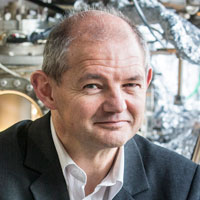 “For the development, application and commercialization of high-speed, temperature-controlled, in situ scanning probe microscopy, leading to key insights in the structure, dynamics and chemistry of surfaces and interfaces”
“For the development, application and commercialization of high-speed, temperature-controlled, in situ scanning probe microscopy, leading to key insights in the structure, dynamics and chemistry of surfaces and interfaces”
 "For seminal contributions to the development of the instrumentation and analysis methods of nanoindentation for characterizing the mechanical properties of materials at the micrometer- and nanometer-length scales. Their work on nanoindentation has profoundly impacted all fields of materials research where mechanical behavior is important."
"For seminal contributions to the development of the instrumentation and analysis methods of nanoindentation for characterizing the mechanical properties of materials at the micrometer- and nanometer-length scales. Their work on nanoindentation has profoundly impacted all fields of materials research where mechanical behavior is important."
 "For seminal contributions to the development of the instrumentation and analysis methods of nanoindentation for characterizing the mechanical properties of materials at the micrometer- and nanometer-length scales. Their work on nanoindentation has profoundly impacted all fields of materials research where mechanical behavior is important."
"For seminal contributions to the development of the instrumentation and analysis methods of nanoindentation for characterizing the mechanical properties of materials at the micrometer- and nanometer-length scales. Their work on nanoindentation has profoundly impacted all fields of materials research where mechanical behavior is important."
 “For the highly successful conception, design, fabrication, and commercialization of an ergonomic three-dimensional local-electrode atom probe (LEAP) tomograph that enables the determination of the local composition information, on an atom-by-atom basis, of metallic, semiconducting, ceramic and organic materials, on a subnanometer scale, in direct space, with high mass resolving power and signal-to-noise ratio, permitting the determination of small concentrations of all elements.”
“For the highly successful conception, design, fabrication, and commercialization of an ergonomic three-dimensional local-electrode atom probe (LEAP) tomograph that enables the determination of the local composition information, on an atom-by-atom basis, of metallic, semiconducting, ceramic and organic materials, on a subnanometer scale, in direct space, with high mass resolving power and signal-to-noise ratio, permitting the determination of small concentrations of all elements.”
 “For the highly successful conception, design, fabrication, and commercialization of an ergonomic three-dimensional local-electrode atom probe (LEAP) tomograph that enables the determination of the local composition information, on an atom-by-atom basis, of metallic, semiconducting, ceramic and organic materials, on a subnanometer scale, in direct space, with high mass resolving power and signal-to-noise ratio, permitting the determination of small concentrations of all elements.”
“For the highly successful conception, design, fabrication, and commercialization of an ergonomic three-dimensional local-electrode atom probe (LEAP) tomograph that enables the determination of the local composition information, on an atom-by-atom basis, of metallic, semiconducting, ceramic and organic materials, on a subnanometer scale, in direct space, with high mass resolving power and signal-to-noise ratio, permitting the determination of small concentrations of all elements.”
 “For the highly successful conception, design, fabrication, and commercialization of an ergonomic three-dimensional local-electrode atom probe (LEAP) tomograph that enables the determination of the local composition information, on an atom-by-atom basis, of metallic, semiconducting, ceramic and organic materials, on a subnanometer scale, in direct space, with high mass resolving power and signal-to-noise ratio, permitting the determination of small concentrations of all elements."
“For the highly successful conception, design, fabrication, and commercialization of an ergonomic three-dimensional local-electrode atom probe (LEAP) tomograph that enables the determination of the local composition information, on an atom-by-atom basis, of metallic, semiconducting, ceramic and organic materials, on a subnanometer scale, in direct space, with high mass resolving power and signal-to-noise ratio, permitting the determination of small concentrations of all elements."
 “For his pioneering use of aberration-corrected Z-contrast scanning transmission electron microscopy in the characterization of materials at the atomic scale."
“For his pioneering use of aberration-corrected Z-contrast scanning transmission electron microscopy in the characterization of materials at the atomic scale."
 "For the development of Fourier Transform Raman Spectroscopy and the demonstration of its utility for examining the chemical structure and properties of organic molecules and polymers in solids, thin films and solutions."
"For the development of Fourier Transform Raman Spectroscopy and the demonstration of its utility for examining the chemical structure and properties of organic molecules and polymers in solids, thin films and solutions." (with D. Bruce Chase)
 "For the development of Fourier Transform Raman Spectroscopy and the demonstration of its utility for examining the chemical structure and properties of organic molecules and polymers in solids, thin films and solutions."
"For the development of Fourier Transform Raman Spectroscopy and the demonstration of its utility for examining the chemical structure and properties of organic molecules and polymers in solids, thin films and solutions." (with John F. Rabolt)
 "For the development, application and commercialization of Angle-Resolved Cathodoluminescence Imaging Spectroscopy (ARCIS) as a new tool for optical imaging at the nanoscale, with applications in nanophotonics and materials science in general."
"For the development, application and commercialization of Angle-Resolved Cathodoluminescence Imaging Spectroscopy (ARCIS) as a new tool for optical imaging at the nanoscale, with applications in nanophotonics and materials science in general."
 "For innovations in neutron sources that have fundamentally changed their performance and enabled opportunities for further advancement of materials that improve the quality of life."
"For innovations in neutron sources that have fundamentally changed their performance and enabled opportunities for further advancement of materials that improve the quality of life."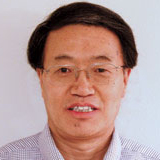 "For seminal contributions to the imaging of specimens in liquids using transmission electron microscopy, revolutionizing the direct observation of materials processes, batteries during operation and biological structures."
"For seminal contributions to the imaging of specimens in liquids using transmission electron microscopy, revolutionizing the direct observation of materials processes, batteries during operation and biological structures."(with Niels de Jonge and Frances M. Ross)
 "For seminal contributions to the imaging of specimens in liquids using transmission electron microscopy, revolutionizing the direct observation of materials processes, batteries during operation and biological structures."
"For seminal contributions to the imaging of specimens in liquids using transmission electron microscopy, revolutionizing the direct observation of materials processes, batteries during operation and biological structures."(with Niels de Jonge and Chongmin Wang)
 "For seminal contributions to the imaging of specimens in liquids using transmission electron microscopy, revolutionizing the direct observation of materials processes, batteries during operation and biological structures."
"For seminal contributions to the imaging of specimens in liquids using transmission electron microscopy, revolutionizing the direct observation of materials processes, batteries during operation and biological structures."(with Frances M. Ross and Chongmin Wang)

Program Assessment
Privacy Policy |
Terms of Use
506 Keystone Drive, Warrendale, PA 15086-7537
Phone: 724.779.3003 | Fax: 724.779.8313 | Email: info@mrs.org
© Materials Research Society. All Rights Reserved.
Web Design & Development by Matrix Group International, Inc.
